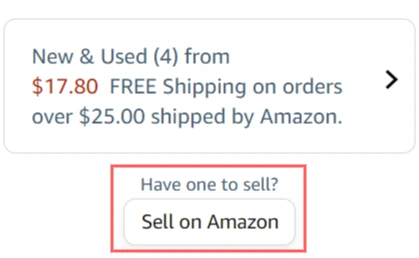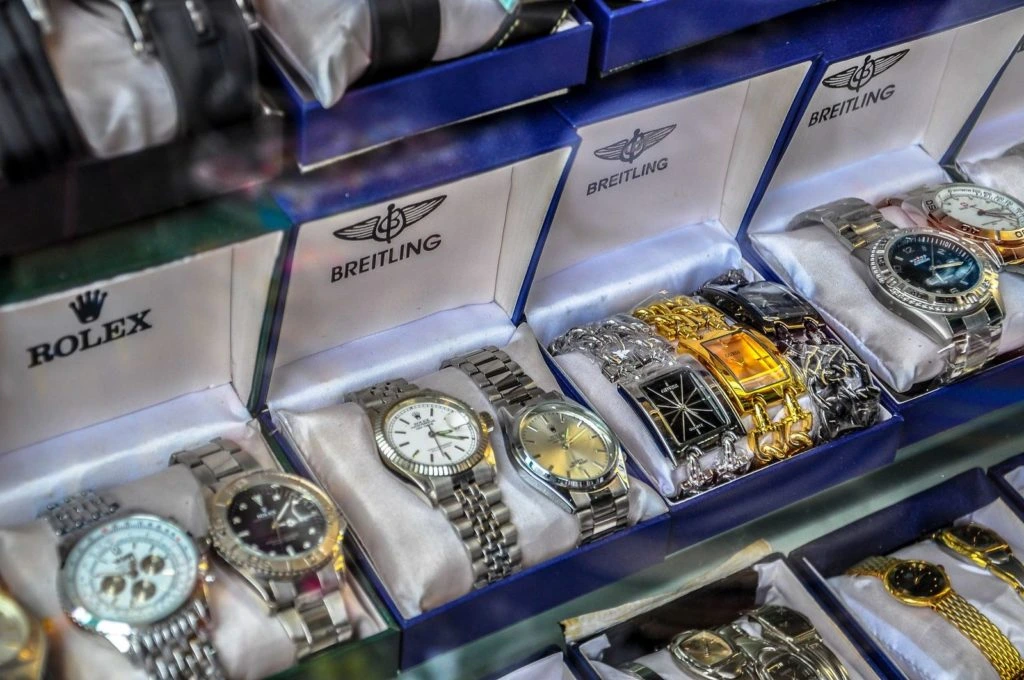
Amazon Brand Protection: 5 Ways Hijackers Will Try to Sabotage Your Brand on Amazon (And How to Combat Them)

Table of Contents
- How Amazon Brand Registry Can Give You Brand Protection on Amazon
- Amazon Hijackers and Piggybackers
- Amazon Brand Protection - Perform a Test Buy
- Amazon Brand Protection - Set inventory purchase limits
- Amazon Brand Protection - Set Serial Numbers With the Transparency Program
It’s a dog-eat-dog world out there on Amazon. Or, at least it can feel like it when you finally get slammed with nefarious Amazon hijackers.
Think of it as a rite of passage. Most successful Amazon sellers will, at some point, have to deal with unscrupulous competitors, whether they’re changing your listing content, selling products on your own private label listing, or even changing your product category to “adult” (weird tactic, right?)
Amazon Brand Protection might be a term you’ve seen thrown around – but no official program of that name exists. Instead, there are steps you can take on your own to protect your brand on Amazon. We’ll dive into a few common tactics that Amazon hijackers often use and how you can best combat them – or help prevent your Amazon listing from being suppressed.
We’ll discuss:
- Unauthorized listing content changes
- Losing the Buy Box on your own listing
- Amazon hijackers selling genuine OR counterfeit goods
- Trademark registration, copyrights, and other IP infringement
- Suspicious/fake Amazon reviews
And most importantly, how to take on these challenges, including:
- Amazon Brand Registry Program
- Amazon’s “Transparency” program
- Helium 10 tools that can help – like Alerts
So grab your boxing gloves and get in the ring!
1. Unauthorized Amazon Listing Content Changes (and How to Fight Them)
Amazon Brand Registry. You’ve likely heard of the program already, but for those just starting on Amazon, you’ll want to pay attention. Brand Registry is arguably a non-negotiable necessity for any private-label seller.
We’ll get into that in a second. It’s related to this first tactic often employed by listing hijackers on Amazon: going into your listing and changing up your product images and description.
How do they do that, you ask, when this is your product? They didn’t get into your Amazon Seller Central account and edit your products, did they?
No, unless Amazon notified you that your account has been compromised, no, no, no.
It’s critical to understand that Amazon’s catalog is technically open for anyone to use. This means that even if you create a new catalog entry (a new ASIN) with your own unique product, you still don’t 100% own that product listing.
That means anyone can come along and hit this button located just below the Buy Box:

And tada – the product listing is now in their own Manage Inventory page in Seller Central.
Now they can battle for authority over product listing content, namely your product images and product copy.
(By the way, this is a good reason to keep backups of your images and listing description, bullet points, and so on.)
Malicious competitors will then proceed to change your listing content – whether that’s deleting your images and copy, replacing them with misleading or inappropriate ones, or some other idea even my scheming self can’t think of at the moment.
Deleting your images and copy speaks for itself – your ranking will plummet, and so will your sales if your listing appears empty.
Changing your content to inappropriate material can, of course, get your Amazon listing suppressed or suspended, and putting misleading content will lead people to purchase, thinking they’re getting one thing, but then receiving another (that “another” being your actual product) – which often results in high rates of returns, negative reviews, and other things that can doom your listing.
But there’s a great way to help prevent this and maintain Amazon brand protection.
How Amazon Brand Registry Can Give You Brand Protection on Amazon
Before I go on, keep in mind that Amazon Brand Registry isn’t a cure-all. Even with Brand Registry, people still might be able to change your listings. They can still “piggyback” on your listing and sell your item too.
But being a registered brand on Amazon means you have the most authority in these kinds of conflicts, as well as the most authority when it comes to making listing changes. It will also benefit you in Buy Box fights and, perhaps most importantly, IP infringement disputes. But more on that farther down.
Generally, the most important thing you need for Amazon Brand Registry is a registered trademark. In most cases, this should be an active trademark – however, there are exceptions, such as going through Amazon’s IP Acceleration program where you can use a pending trademark instead.
Your trademark will also need to appear on your product packaging.
This is why registering for your trademark is one of the steps you should take as soon as possible once you have your brand concept finalized – you can file for your trademark even before you start selling on Amazon.
For the fine print of Brand Registry and how to get started, click here to go directly to Amazon’s Brand Registry website.
And for more details on the how-to of getting your trademark (as well as our tactic of registering for a European one first to ‘shortcut’ the process), see our guest blog by Anita Mar, a trademark law expert with over 20 years of experience in this field, and then check out her trademark and Amazon brand protection services.
Also, give Yael Cabilly’s interview on the AM/PM podcast a listen. Yael is an attorney who specializes in trademark law in e-commerce.
2. Losing the Buy Box (and How to Get it Back)
It’s important for Amazon beginners to know the “Buy Box” is the little window at the top of the Amazon listing where a customer will click “Add to Cart.”
Most people just look at the price and delivery date and then hit “Add to Cart.” Likely, this is your experience as a buyer as well, unless you’re looking at a unique or rare item.
But, see the part at the bottom that says “Ships from Amazon” but “Sold by M4Deals”?
The “Sold by” is the seller (hypothetically, you, if this were your listing) who’s actually selling the product.
In a perfect world, if this were your private label product – aka a product that you have designed, trademarked, and manufactured – the “Sold by” should always say you.
But what if it doesn’t?
If you scroll past the Buy Box and take a closer look, some product listings, especially those of a non-private label brand, will have multiple sellers, usually listed under the “New (#) from ‘price’” and “Other Sellers on Amazon” headings.
These sellers could be arbitrage sellers (they’ve bought the item at online or in-store retail locations for a lower price and are selling at a higher price) or wholesalers (they buy in bulk directly from the manufacturer).
Winning the Buy Box is based on a number of factors, namely price, Prime Shipping availability and speed, and seller rating/performance. The Buy Box is competitive real estate because 99% of buyers aren’t checking who’s selling; they just hit “Add to Cart.”
But in the case of your private label listing, if you’re the sole creator, why would there be anyone else also selling?
Amazon Hijackers and Piggybackers
Amazon listing hijackers. They piggyback off of your already-made listing and join in on selling.
But wait – surely these must be counterfeits, right?
Sometimes they are, but not always. There are typically two paths from here.
One is that these listing piggybackers are indeed selling counterfeits. This may be to profit at your brand’s expense (by selling cheaply-made goods and letting the negative reviews on your product roll in) or to purposefully ruin your brand’s reputation so that their competing brands can get a leg up.
The second path is that piggybackers will actually buy legitimate products from you – typically when you’re having a sale – and then wait until the price goes back up to resell them. Often they’ll undercut you so that they can win the Buy Box, or they’ll wait until you’re low or out of stock to sell the inventory they’re sitting on.
In the first scenario, there are a few things you should do. Hopefully, by then, you would have Brand Registry; if so, you may be able to avoid this scenario outright (keyword: may – it’s never guaranteed). If not, Amazon is more likely to side with you if you alert them of counterfeit products.
Amazon Brand Protection – Perform a Test Buy

Regardless, you’ll want to perform a “test buy.” A test buy is where, as a customer, you purchase directly from the seller piggybacking off of your listing. Make sure that you select their product, not your own (basically, confirm you’re not buying from yourself based on who’s in the Buy Box at the time.)
Save all related order information. Once you receive your product and have verified it’s indeed counterfeit, take photos of the product, packaging, etc. Then, take photos comparing them to your authentic product. Note any differences.
Now, it’s critical to know you are not approaching this as an Intellectual Property infringement claim. If you file an IP claim in this scenario, you’ll end up being passed around Seller Assistance reps in an infinite loop.
When approaching Amazon with your evidence, you must frame this as a buyer receiving an “item not as described.” Frankly, Amazon will care more about what an unhappy customer thinks versus what you, the seller, thinks.
Put together a report with the following, being as concise as possible (bullet points are good):
- Item ASIN
- Product title
- Amazon order ID (should be a string of numbers)
- Photos of the item you received in the test buy, from as many angles as possible
- Concise description of why this item “is not as described”
- Your contact information (email, telephone number)
Submit your form via their link (and choose Other issues > Report a violation) here: https://sellercentral.amazon.com/cu/contact-us
Or email them at [email protected]
Avoid using any IP-related language such as “copyright,” “infringement,” etc. or this may flag your message and reroute it to the wrong place.
Also, refrain from emotional rhetoric in your report. Amazon customer service reps care about efficiency, not emotion, so don’t waste your time or theirs with an emotional appeal.
Instead, focus on why the item received does not match the item description/images in the listing.
After filing a report, sellers say they typically see the piggybacker disappearing from the listing after 48 hours.
Amazon Brand Protection – Set inventory purchase limits
Did you know you can set a max purchase quantity on each of your products? That’s a best practice highly recommended all sellers do to prevent the scenario where a hijacker cleans out your inventory and then resells it.
That sort of behavior is especially notorious while you’re having a sale. Online arbitrage sellers especially may buy all of your available units while they’re discounted, leaving you with nothing – and then allowing them to resell at full price (or more!).
Prevent this from happening by setting a max purchase quantity for all of your items. You can do this in Manage Inventory in Seller Central or by using our Inventory Protector tool to set multiple purchase quantity limits all in one place!
Amazon Brand Protection – Set Serial Numbers With the Transparency Program
Launched in 2019, the Transparency program allows you to put individually-numbered serial barcodes on each of your products so that Amazon can verify the authenticity of each of your products as they ship them out. This would theoretically prevent any counterfeiters from being able to sell your products on Amazon.
The Transparency label also allows buyers to scan the code with the Transparency app to verify authenticity and view product information.
Of course, this still wouldn’t let you combat sellers reselling legitimate products, and it’s up to you to decide if Transparency is worth it for you. If you sell high-price-per-unit products (such as computers or other highly-technical items), it may be worth it to protect each of your units.
For more on the Transparency app and how to enroll, see Amazon’s page about it here.
If any sellers have Transparency experience, feel free to comment below and let us know how it’s worked for you!
3. Trademark/Copyright and IP Infringement (and Who to Tell)

Since I already went into detail about Amazon Brand Registry above, I won’t do it again, but being Brand Registered will help prove your case in intellectual property (IP) infringement cases.
Amazon will enforce IP law, and they’re generally swift to take down infringing material, but note they will not enforce other things in this article, like kicking piggybackers off of your listing just for reselling your product.
Anyhow, should you notice a seller committing IP infringement – for example, using your copyrighted images, packaging, trademarked logo, etc. in their listings – you can report them to Amazon.
This is one of those things that you may doubt will happen to you – until it does, and then you’ll wish you’d protected yourself sooner!
This goes back to why it is absolutely necessary to file for a trademark ASAP – basically, file for one as soon as you know what your brand name will be.
Intimidated? Trademark and copyright law might be a bit scary, but it’s probably easier than you think. See our materials above – oh, and by the way, our complete Amazon course, Freedom Ticket, walks you step-by-step through how and where to file your trademark, the fees, what materials you need, and so forth.
Anyway, to report infringing content, go directly to Amazon’s “Report Infringement” page and submit a report through their form.
Make sure your copyright and trademark information is current and active (not just filed and pending), and then get ready to fight.
Should the malicious sellers push back, you may need to seek legal counsel – check out our interview with Chris McCabe, a former Amazon Performance and Policy Team member-turned-independent-risk-assessment-analyst who’s familiar with navigating these waters.
4. Fake Negative Reviews (and How to Remove Them)
There’s a very specific panic that comes from waking up, checking your inbox, and seeing you have a dozen new negative reviews – all mysteriously having appeared overnight, and from new accounts with only one review (aka the one they just left on your listing.)
Suspicious? Absolutely. And this is especially damaging for new product launches or those who just don’t have enough authentic positive reviews to buffer the influx of malicious negative reviews.
You can report these reviews, and you should, in order to maintain brand protection on Amazon. Amazon is quite strict about review removal since they like to, paraphrased, “ensure a fair and equal forum for buyers to express their experiences and opinions.” But if the activity is suspicious and clearly libelous, you can send your concerns directly to [email protected].
(To be realistic, don’t get your hopes too high – Amazon very rarely removes negative reviews unless for good reason. See our guide on how to remove negative reviews for further detail on this subject.)
Like the test buy report, make sure to keep your complaint concise and without emotional embellishments.
More info on “Community Guidelines” can be found on Amazon’s page, with the “Reporting Abuse” info at the very bottom.
5. The “Adult” Product Category Suppression Trick

This unusual tactic is somewhat strange but nonetheless effective.
Basically, a competitor will change your product category from whatever it is (say, Kitchen) to “Adult.”
Yes, for those that didn’t know, there is a whole “hidden” marketplace of Adult category items – you can guess what that includes!
The best part for listing hijackers is the “hidden” part. Of course, Adult category items are hidden from normal search results; you have to purposefully set some filters to find items in this category. Naturally, this is to protect the wayward innocent eyeballs from accidentally stumbling on this minefield (or this Elysium, depending on your perspective.)
If you don’t have any way of being alerted to listing changes (here’s another shameless Helium 10 Alerts plug), you’d have no idea that your product got changed to “Adult” and is therefore essentially invisible on virtually all of Amazon. It’s almost like having your listing suppressed.
The only way you might notice on your own is the sudden plummet/halt in sales. One day you’re selling a few hundred units per week; the next, nothing.
If this happens to you, definitely check your product category for this miscategorization.
But – waiting to find out that way can cost you a lot of money in terms of lost potential sales. This is something Alerts can let you know about the moment it happens.
Preventive Action is the Best Way To Protect Your Brand on Amazon
There are a million analogies I could use here (some less than appropriate) but let’s say this is like regularly taking your car in for oil changes and regular maintenance when you’re supposed to versus waiting until you have a breakdown on the road in rush hour traffic in the middle of a 5-way intersection next to a freeway onramp.
Protect yourself. Prevent these issues before they arise.
And for those that can’t be prevented in advance, at least be aware of them the moment they happen so you can react immediately to stamp out the threat and avoid interruptions in your sales and ranking velocities.
So once again, we recommend Helium 10’s Alerts tool, which will let you know the instant there’s suspicious activity on your listings, including category changes, copy and image changes, Buy Box loss, and negative reviews.
In the words of Jeremy Irons’ Scar in The Lion King:
“Be prepared!”
Achieve More Results in Less Time
Accelerate the Growth of Your Business, Brand or Agency
Maximize your results and drive success faster with Helium 10’s full suite of Amazon and Walmart solutions.
